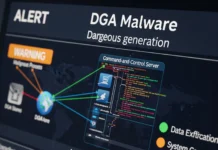Juggling overflowing inboxes, back-to-back meetings, and tight deadlines is the reality for most modern professionals. While some workplace stressors will always exist, managers have a responsibility to implement policies that make work life more manageable for their busy teams. Eliminating redundancies, providing flexibility, and enabling employees to work smarter can significantly boost productivity and morale. By taking proactive steps to remove unnecessary obstacles, managers can empower their teams to do their best work in a reasonable time frame. This article will explore actionable ways managers can streamline workflows and support employee well-being to ease the burden on their busy staff.
Utilise Effective Communication Tools
With the variety of communication tools available today, managers need to utilise the most effective ones for their workplace. While email tends to be the default, it may not always be the best option. Lengthy email chains can cause confusion, especially when multiple people are involved. For quick updates or questions, chat tools like Slack or Microsoft Teams may be better suited. These platforms allow for efficient communication without disrupting workflow or requiring the formality of an email.
Managers should also take advantage of project management tools like Asana or Trello. These tools provide transparency into what everyone is working on and allows team members to collaborate efficiently. Setting up templates for recurring tasks can also be helpful. For example, a work instruction template can standardise how employees submit help desk tickets or document procedures. Using the right technology tools can streamline communication and prevent employees from being bogged down with excessive meetings and emails.
Reduce Unnecessary Meetings
Meetings are a necessary part of any workplace. However, too many unnecessary meetings can quickly eat up an employee’s valuable time. Managers should critically evaluate the need for each meeting and consider if the goals can be accomplished through other means such as an email or quick conversation. If a meeting is necessary, provide employees with a clear agenda ahead of time so they can come prepared. Also, set a timer for the meeting and stick to the allotted time. Employees will appreciate not having their whole morning or afternoon consumed by pointless meetings.
Additionally, managers should reconsider the need for recurring status update meetings. Do they really require weekly updates, or would biweekly or even monthly updates suffice? Removing redundant meetings frees up more time for employees to do their actual jobs. When meetings are to the point and infrequent, employees can stay focused on their core tasks.
Offer Flexible Work Arrangements
Flexible work arrangements like telecommuting and flexible scheduling are highly desired by today’s workforce. Managers should provide these options whenever possible to help employees maintain a healthy work-life balance. Studies show that employees are more productive when given flexibility over their time.
With video conferencing tools, employees can work remotely yet still collaborate effectively. Managers must create a culture of trust and evaluate employees based on their results, not just face time in the office. If certain roles require being on-site, consider offering flex scheduling or the ability to shift hours as needed. Giving employees more autonomy over their schedules helps reduce stress and improve morale.
Set Reasonable Expectations
At many companies, workers feel pressured by unreasonable demands and deadlines, leading to excessive overtime and job stress. Managers can create a healthier environment by setting realistic goals and avoiding last-minute fire drills whenever possible. Evaluate workloads to ensure teams have enough capacity for their assignments. Overwhelming employees with more work than can reasonably be accomplished breeds frustration, not motivation or productivity.
Managers should also avoid blanket policies around response times. Requiring employees to respond to all emails and calls within 30 minutes, for example, ignores that certain tasks require focused time. Encourage employees to set their used iPhone 14 to do not disturb when they need deep focus. Also, model responsiveness expectations by not expecting late evening or weekend responses unless you have previously confirmed schedule availability with the employee. Setting modest standards around responsiveness and capacity enables employees to do their best work within a normal workweek.
Prioritise Employee Well-Being
At the end of the day, employee well-being should be the top priority for any manager who wants to retain and motivate their team. Go beyond just words of encouragement and implement policies that truly support employees’ physical and mental health. Be flexible with schedules for doctor appointments, health reasons or family obligations. Consider offering services like on-site flu shots or free short-term eap counselling.
Also, set clear guidelines around work-life separation and discourage after-hours work or excessive overtime. Make sure employees are taking their vacation days and disconnecting during weekends and holidays. A refreshed and recharged employee is far more engaged and productive. When managers genuinely care about their employees’ well-being—not just what they produce—the entire organisation reaps the benefits through higher retention and performance.
The most successful companies realise that supporting employees and streamlining how work gets done leads to optimal results. Utilising the right mix of communication tools, process improvements, automation and employee-focused policies enables busy employees to do their best work without unnecessary stress or distractions. While some inefficiencies may always exist in any workplace, managers should constantly evaluate ways to maximise employees’ time and capacity by eliminating redundancies, confusion and unnecessary obstacles. Empowering busy employees to work smarter, not just harder, is a win-win for both individuals and organisations.



































